Lee Wylie On Pacquiao vs Algieri, Part 2
Manny Pacquiao’s reputation and effective aggression belie his actual fighting style. Unlike Algieri’s last opponent, Ruslan Provodnikov, Manny is not a pressure fighter, is not proficient at blocking off his opponent’s escape routes, and his inside game is pretty much non-existent. The truth is, Manny much prefers working off of his opponent’s leads, countering and throwing combinations at mid-range. These days, as a more civilized boxer-counterpuncher, Pacquiao thrives against aggressive, straight line attackers, not movers. Those who were essentially stationary targets, such as De La Hoya, Cotto, Hatton, Margarito and Rios, were severely outclassed. On the other hand, those who fought in reverse and stepped off the angle to deny him entry, like Marquez, Mosley (though “Sugar” Shane couldn’t transition back to offense from defense) and Bradley (1st fight), managed to mitigate Pacquiao’s A game and quarantine many of his attacking options.
Beyond a shadow of a doubt, Pacquiao’s greatest asset is his footwork. Thus, when Chris Algieri challenges the Pacman this Saturday, he needs to control Pacquiao from the waist down in order to neutralize him from the waist up. Pacquiao is a tremendous combination puncher (his patented jab-straight left to the body-vertical jab to the head is one such sequence), but it’s hard to put combinations together against a moving target. Algieri has excellent mobility and his reach advantage will be substantial, so it’s important that he maximize these advantages in order to minimize Pacquiao’s strengths.
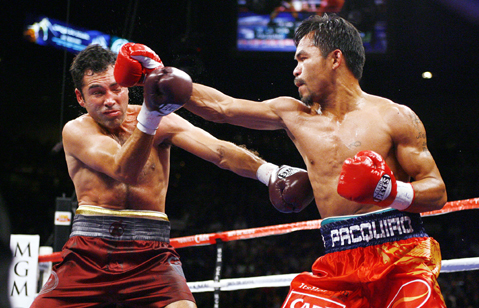
Algieri must do all he can to offset Pacquiao’s preferred alignment. The most efficient way of doing this is with counter-movement. If Manny and his opponent are facing each other at 6 and 12 o’clock respectively, Pac’s modus operandi is to take himself offline at an angle towards 8 o’clock (slightly backwards and to his left) in the hope of squaring his opponent up and walking them into his straight left hand. As far as usual southpaw behaviour is concerned, Manny tends to go against the grain by stepping to his left and sometimes will even surrender the sought after outside lead foot position just to expand his attacking options further, such as throwing a lead hook from an inside angle.
Generally then, whenever Manny drifts to his left, Algieri should move to his left. In terms of strategic positioning, this is how Marquez had success nullifying Pacquiao’s angular attacks. Location, therefore, is the key to this match for Algieri. Generally speaking, while it’s important to circle to the left and away from Manny’s rear hand, which is where the literal threat lies, there is a risk of inadvertently moving into the path of Manny’s right hand, which, as we’ve discussed already, is no longer a sleeping dragon.
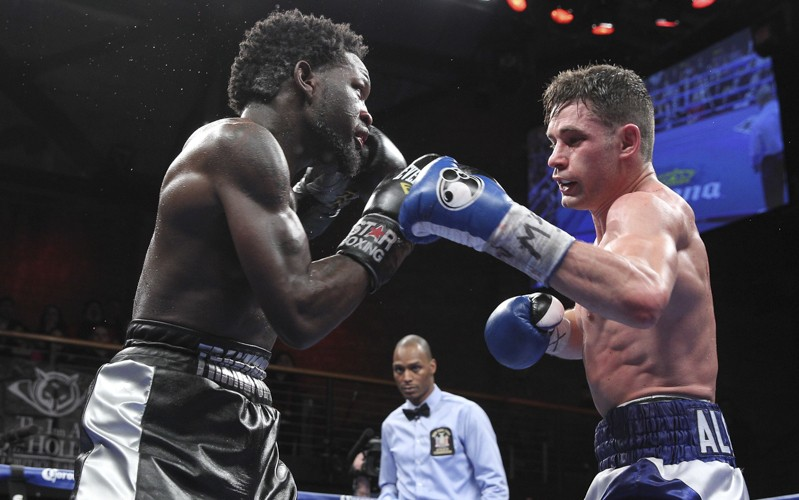
Provided he employs it intelligently by altering its depth to keep Manny guessing, and in conjunction with lateral movement, the jab will be an indispensable weapon for Algieri. Defensively, Manny doesn’t really bother checking or occupying an orthodox opponent’s jab with his lead hand as most southpaws do. (He sometimes slaps it down prior to launching a 1-2 combination, but that’s something different.) Consequently, the jab has just as much use here as it would during a regular orthodox vs. orthodox encounter. Throwing the jab without intent, however, is next to worthless.
Algieri is a big guy and he has a lot to protect, therefore it’s paramount he doesn’t present Manny with any clear targets when throwing the jab and must always remain cognizant of Pacquiao’s “split-entry” straight left and counter lead hook, weapons Manny uses to neutralize the jab. Against Provodnikov, Algieri was a little slow in bringing his rear hand back after throwing it, and often scissored his guard by allowing his rear hand to drift away from his chin whenever he threw his jab or left hook. Consequently, this is why he ate so many left hooks from “The Siberian Rocky”.
Further, Algieri should never jab down to Manny’s level, nor with his head dead central. Whether he’s targeting the body to tire him, the head to control him, or even Manny’s lead shoulder to unbalance him, it’s important for Algieri to bend at the knees slightly, thus lowering his center of gravity, and get behind his lead shoulder for added protection and stability. Algieri must also preserve his length advantage by blading his stance when throwing the jab (without inadvertently shutting off his rear hand, of course).
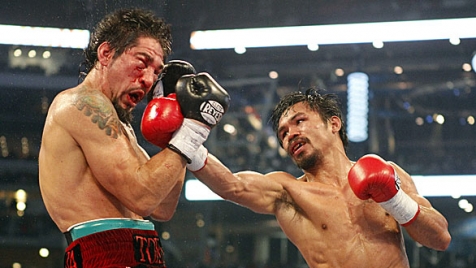
Because of Algieri’s length and the regular orthodox vs. southpaw dynamics (more space between the two combatants because of the opposing lead leg obstruction), Algieri’s straight right will have an awful long way to go before it reaches the target. Juan Manuel Marquez relies on his rear hand a lot against Pacquiao, but he seldom leads with it. Instead, he’ll conceal it behind a preparatory feint, a jab, or even a level change into a lead uppercut. Algieri has a wonderful lead uppercut which he throws after a jab and then slipping outside his opponents’ line of vision. To his credit, Algieri is always careful to follow the uppercut with another jab to re-establish his range. Against Pacquiao, and depending on the circumstance, that sneaky uppercut might be a better initiator than the straight right due to the long road his rear hand must travel and the danger of being beaten to the punch by a short lead hook on the inside.
A left hook—which has the capacity to land from either an outside or inside angle—is always a useful weapon against a southpaw. However, this does not mean Algieri can lead blindly with it; it will be more beneficial to him if it’s thrown as a counter over the top of Pacquiao’s bridge-gapping lead hand, or if Manny overcommits and is off balance after throwing his straight left. The left hook also works extremely well when thrown after a straight right to the head or body in combination. Algieri also shouldn’t be afraid to let his hands go and work the body with tight shovel hooks should he find himself in close with Manny. Compared to the rest of his game, the Filipino’s in-fighting leaves much to be desired. Manny’s inactive, generic guard at close quarters also makes him susceptible to uppercuts through the center.
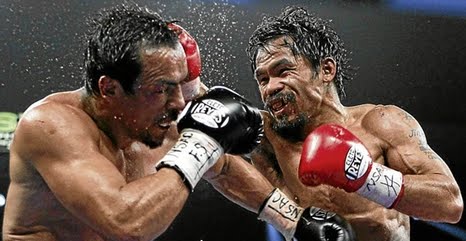
Pacquiao becomes impatient against defensive-minded opponents who refuse to take the fight to him. This often leads to deeper attacks with more commitment. Needless to say, Algieri should use this knowledge to his advantage to set traps. Algieri’s length is such that he will often find himself in positions where he can reach Manny while Manny is falling short. Thus, Algieri would be well served to use his footwork to instill a false sense of distance and frustrate Pacquiao into ploughing forward recklessly and into counters. When Manny is looking to create openings with his head and shoulder feints, instead of doing as desired, Algieri should feint with him. Manny often reacts to hard feints by covering up or by stepping out of range. Feinting back at feints is a good way seize the initiative and maintain control of a bout.
Pacquiao is essentially a rhythm based fighter. But rather than maintain a constant, steady rhythm, Pacquiao attacks sporadically, using a staccato or broken rhythm prior to initiating an attack, which makes it difficult for opponents to time him. Again, if Manny is looking to draw leads and throw off Algieri’s timing with head and shoulder feints, Algieri should feint with him to regain control of the situation before driving him back with a stiff jab or double jab-right hand combination, one of Juan Manuel Marquez’s preferred tactics against Pacquiao. Also from Marquez’s little bag of tricks: Algieri should be monitoring Manny’s foot feint (as Marquez did when he knocked him out cold) and use it as a signal to fire, or to take himself off the line of attack where Manny will be forced to reset.
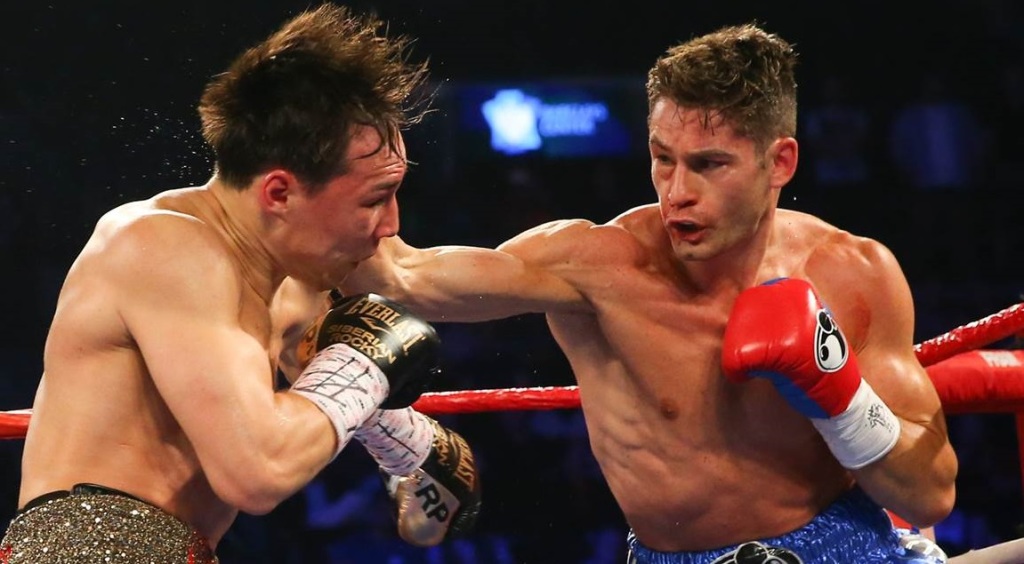
Conclusion: Algieri is very resilient and his conditioning is clearly superb, but there is a strong possibility that Pacquiao’s discordant, stop-start rhythm and explosive, in-and-out raids will come as a shock to him and won’t allow Algieri to implement his game plan or seize the all-important initiative. Furthermore, Pacquiao has spent almost his entire career facing upper-echelon competition while his opponent, despite having earned this opportunity with wins over Emmanuel Taylor and Ruslan Provodnikov, remains relatively inexperienced at the elite-level.
— Lee Wylie

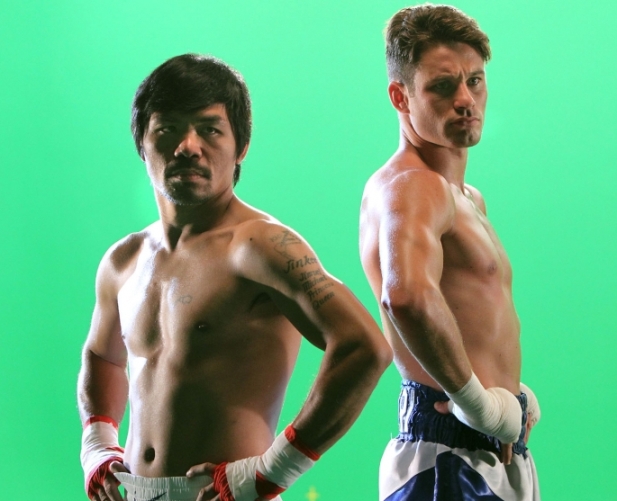

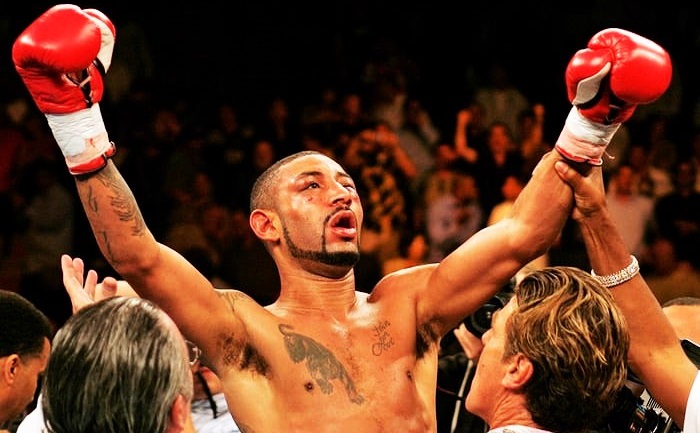
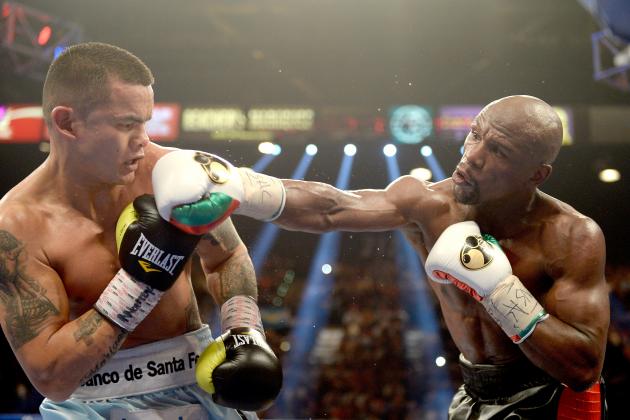
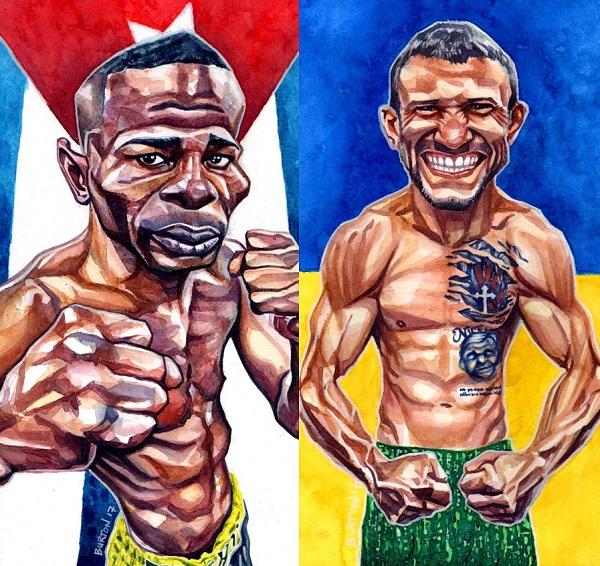
hey,
this is by far the most fair analysis ive read on the internet.
ive considered most points mentioned (not all, as you have probably studied both fighters more than i have) and i am leaning toward algieri winning by decision.
i want to point out that despite his low KO percentage, algieri does have decent power. (at least enough to pop provodnikov’s head backwards multiple times).
another thing is, algieri “throws” a lot of “sloppy jabs with no power”, this i think its one of his strategies: to mix up speeds and add in variation in order to mess with people’s rhythm and mindset.
im quite excited for this fight, as pacquiao does have fast feet (i wouldnt consider it “great footwork” but just very fast feet/hand coordination), we will see how he deals with a boxer-puncher/runner (without insane power)
thank you for your article and analysis! enjoyed reading it!
cheers for the love of boxing!
Excellent analysis for this fight, which I feel will be exciting and tactical. There is one thing I would like to point out and it has to do with length. According to boxrec which measures reach, Algieri has a five inch advantage at 72″ vs. 67″. However, if you look at HBO’s arm-length metric Pacquio has an advantage of an inch at 23″ vs. 22″. It is worth considering, especially after Hopkins/Kovalev- where Hopkins had the reach by two and a half inches but an arm-length disadvantage of an inch. It is interesting to think about and I wonder how accurate the measurements usually are. I also wonder if it will make for Algieri being shocked by Pacman’s length, expecting himself to have a significant advantage.
Anyway, I came here from Youtube and I love your analysis videos. I wonder what you think of the physiology of this, and on the two metrics of arm-length vs. reach.
I was of the same mindset as you LW…
Boy were we wrong on all fronts. I think you need to revisit this.
Also, I think we need to start giving more credit to Pacquiao as a “thinker”. I find it insulting that we do it over and over and over again…. An ATG, whom we think Algeiri, Bradley, and seemingly any meticulous technician can “outthink” is demeaning and foolish. It isn’t all athleticism, there’s a brilliant brain behind this machine.
Pacman won. Im right, you’re wrong. Next 🙂